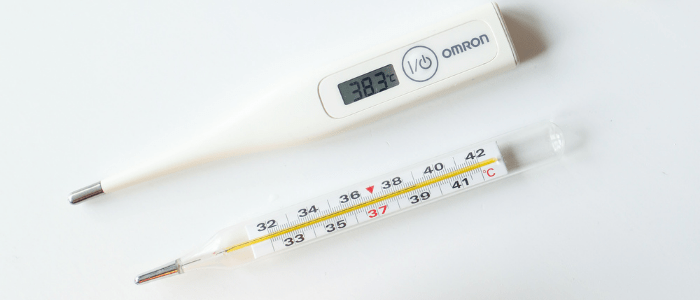Feed a fever

In the first study to show that a pathogen can interfere with the gut/brain circuit, researchers find that eating (or not) dramatically influences an infected host’s chance of survival.
When an animal gets sick, it often loses its appetite. Researchers have examined how fasting affects the survival of an infected host, but results have been mixed: for some pathogens and hosts, eating reduces survival, while in others, eating increases it. Now, a new study published in Cell reports that eating ensures survival in mice infected with Salmonella typhimurium, an intestinal pathogen, because Salmonella alters the gut/brain circuit to inhibit anorexia and, thus, reduces its virulence and increases its transmission to other hosts. Treating “sickness-induced behavior” such as fasting may be a new way to survive infection without the need for antibiotics.
“By understanding how we can dampen physiological damage that occurs during infection, we can develop therapeutics that promote health without targeting the pathogen,” said study author Janelle Ayres of the Salk Institute. “Pathogens will not evolve resistance against such drugs because they promote health by targeting physiological damage rather than killing the pathogen like antibiotics do.”
Previous studies investigating fasting and infection have used a rather unnatural technique: researchers inject microbes into the bloodstream and test how the host’s nutrient status affects its survival. This prevents researchers from studying how the host’s loss of appetite influences the behavior and virulence of the pathogen.
So in this study, Ayres’ team used a natural host–pathogen system. They infected mice orally with Salmonella and looked at how feeding affected the pathogen’s transmissibility and virulence.
Hosts infected with Salmonella that didn’t eat fared worse than those that did; in fasting mice, Salmonella were much more virulent, invading systemic tissues such as the spleen and liver, which caused a typhoid-like disease. In fed mice, Salmonella did not spread to systemic tissue and was shed in the feces, increasing transmission to other animals. This was not due to better immune function, since both groups of mice had the same amount of pathogen in their intestines.
The team pinpointed a gene, SlrP, that blocks the anorexic response in sick mice, resulting in less virulence and better host survival. SlrP alters the gut-brain circuit controlling appetite by inhibiting the intestine’s inflammatory response, which inhibits IL-1beta-mediated signaling through the vagus nerve to the hypothalamus, the brain’s appetite control center.
Nutrition, then, is a key player in disease transmission and severity. In the future, doctors may test for the pathogen in an infected patient and then advise the patient whether or not to eat.
“But first we have to conduct fundamental biological research to understand how different pathogens will behave under different nutrient conditions before it can be translated to the clinic,” said Ayres.